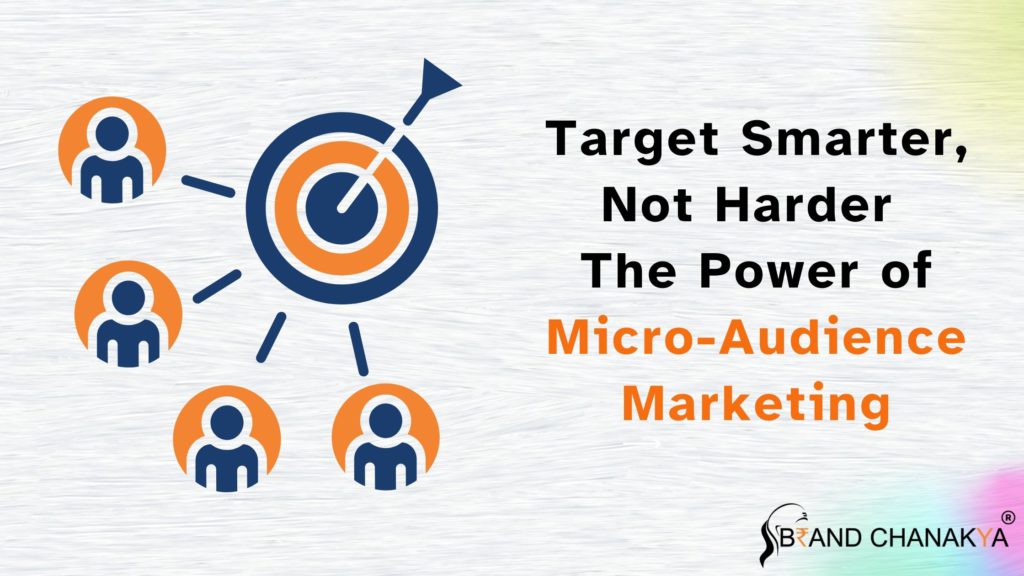In today’s digital world, the online space is overcrowded with ads, content, and messages vying for attention. When everyone is shouting at once, broad targeting becomes expensive and less effective. Businesses can no longer afford to aim blindly and hope something sticks.
Enter micro-audience marketing — the art of identifying and targeting smaller, highly relevant audience segments. This approach focuses on quality over quantity, ensuring your marketing reaches the people who are most likely to engage, convert, and become loyal customers.
With the right combination of performance marketing strategies and SEO targeting techniques, brands can connect with these niche audiences more efficiently, reduce ad waste, and achieve a higher digital advertising ROI.
What is Micro-Audience Marketing?
Micro-audience marketing is about focusing on small, specific audience segments instead of targeting a massive, general group. These segments can be defined by:
- Behavior: Past purchase patterns or website activity
- Interests: Hobbies, lifestyle, or content consumed
- Geography: City, neighborhood, or even a specific building
- Demographics: Age, gender, income level
- Buying Stage: Awareness, consideration, or ready-to-buy
It’s not about reaching everyone — it’s about reaching the right people with the right message at the right time.
Example: Instead of targeting “travel enthusiasts,” you target “budget-conscious travelers in Rajasthan who search for heritage stays.” This level of focus makes campaigns more relevant and impactful.
Why Micro-Targeting Is More Effective Than Broad Campaigns
- Higher Engagement & Conversions
Messaging resonates more when it’s tailored to a specific audience’s needs and preferences. - Lower Cost Per Acquisition (CPA)
You spend less by avoiding irrelevant clicks and impressions. - Better Message Alignment
Content and offers match the exact pain points and desires of the audience. - More Personalized Experiences
Personalized ads make customers feel understood, increasing loyalty. - Less Ad Fatigue
By segmenting audiences, you avoid showing the same ad to everyone, keeping campaigns fresh and relevant.
Using Performance Marketing to Reach Micro-Audiences
Performance marketing allows for precise, measurable targeting, making it a perfect match for micro-audience marketing.
a) Precision Ad Targeting
- Meta Ads (Facebook & Instagram): Use detailed targeting based on demographics, interests, behaviors, and lookalike audiences.
- Google Ads: Target high-intent searches with keyword matching, or show display ads on relevant sites.
- LinkedIn Ads: Ideal for B2B targeting by job title, company size, or industry.
- Custom & Lookalike Audiences: Re-engage website visitors or target audiences similar to your best customers.
b) A/B Testing for Micro Segments
- Test different ad creatives, headlines, and offers for each audience segment.
- Example: Show a “10% discount” offer to one segment and a “free trial” offer to another, and see which performs better.
- Helps optimize spend for maximum conversions.
c) Measuring What Matters
- ROAS (Return on Ad Spend): Ensures campaigns are profitable.
- Cost Per Result: Tracks the actual cost of each conversion.
- Engagement Rate: Measures how well your audience responds to your ads.
- Use real-time data to scale winning campaigns and pause underperformers.
Leveraging SEO for Micro-Audience Discovery & Targeting
SEO isn’t just for broad visibility — it’s a powerful tool for attracting niche traffic.
a) Long-Tail Keywords & Search Intent
- Long-tail keywords capture specific search queries.
- Example: Instead of targeting “fitness equipment,” target “affordable fitness equipment for small apartments.”
- Attracts qualified visitors with higher conversion potential.
b) Location-Based SEO
- Optimize for geo-targeted keywords and add location pages.
- Claim and optimize your Google Business Profile to appear in local searches.
- Example: A bakery targeting “best eggless cakes in Jaipur” instead of just “best cakes.”
c) Content Clusters
- Create topic clusters that focus on niche segments.
- Example: A digital tool company could have separate blog sections for “startup founders” and “freelancers.”
- Tailored landing pages ensure each audience gets relevant, personalized content.
Combining SEO and Performance Marketing for Max Impact
When SEO and performance marketing work together, they create a powerful cycle:
- SEO helps you discover the niche demand by analyzing keyword searches, trends, and audience behavior.
- Performance Ads allow you to instantly scale by targeting similar audiences or retargeting visitors from SEO traffic.
Example Strategy:
- Use SEO to rank for “eco-friendly stationery suppliers in Mumbai.”
- Retarget visitors from that blog/page with Google Display or Instagram ads featuring best-selling products.
The result? A 360° targeted marketing campaign that attracts the right people and follows up until they convert.
Conclusion
In the age of digital saturation, micro-audience marketing is the smarter way to grow. Instead of shouting to everyone, whisper to the right people — those who are most likely to buy, stay, and recommend your brand.
By combining niche audience marketing via SEO and performance marketing strategies with precise targeting, A/B testing, and data-driven decision-making, you can achieve higher ROI, reduce wasted spend, and create meaningful connections with your customers.
Want to identify and target your most profitable audience segments? Let’s build a smarter strategy together with Brand Chanakya.
Follow us on Instagram:- @brand_chanakya

